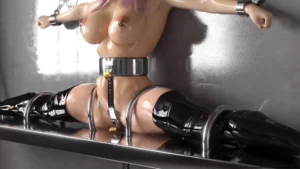BDSM was something that when I first heard about it, felt almost like it was this big secret hidden behind closed doors. I was curious but had no clue where to start. Honestly, the whole idea seemed intense. People tied up, using “safe words” and trusting each other in ways I hadn’t seen before. I started out reading a lot about it, and found lots of good information on websites such as Fetlife and SnakkOmSex. I didn’t know if it really was for me, or if it even made sense. But what I quickly learned is that BDSM isn’t a scary world; it’s actually one of the most honest ones out there. Let me share a bit about why.
Starting with Trust
The first big lesson? BDSM is built on trust—more than most things. People talk a lot about “trust” in life, but in BDSM, it’s the foundation of everything. When you let someone tie you up or put yourself in a vulnerable position, you’re trusting them in a way that’s deep and real. This kind of trust isn’t just handed over; it’s earned. You don’t just say, “Sure, let’s go.” You talk it through first, set boundaries, and make sure everyone’s comfortable. I found that this kind of communication isn’t just a part of BDSM; it’s something everyone could benefit from in any relationship.
Trying to Understand “Why”
At first, I didn’t get why anyone would want to feel pain or give up control. It sounded almost opposite of what we’re taught. But as I read more and talked to people, I realized that for many, it’s not about pain—it’s about feeling alive and connected. Letting someone else take control (when you want to) can be a huge relief. Imagine a day when you don’t have to make a single decision, and someone else guides you through the experience. For some, that’s what submission is—a break from all the thinking and decision-making.
Consent is Everything
One of the best things about BDSM is that everyone has a say in what happens. Consent isn’t just a nice-to-have; it’s everything. And this kind of consent isn’t like saying “yes” or “no” once and calling it good. It’s an ongoing conversation. I was amazed by how seriously people take it. Before anything even happens, partners discuss what they’re okay with, what’s off-limits, and what would make them feel safe and respected. It’s the kind of open conversation we don’t always see in other parts of life.
There’s also the “safe word” concept, which is a word or phrase anyone can use to stop immediately if things feel off. Imagine feeling free to say “stop” and knowing everyone respects that. Honestly, I think all relationships would be healthier if people talked about what they want and don’t want with this much honesty.
Exploring at My Own Pace
I found that BDSM isn’t an all-or-nothing thing. You can try small things first. Maybe it’s as simple as letting someone take control in a fun, playful way. Or maybe it’s just exploring new ideas with someone you trust. I started small, just testing what I was comfortable with, and talking about it with people who had experience.
One of the things I liked most? There’s no pressure to be anything other than yourself. BDSM communities, from what I’ve seen, are open-minded and understanding. Everyone’s experiences are different, and that’s okay.
What I Learned Along the Way
What I realized is that BDSM isn’t about pain or control as much as it’s about connection and communication. It’s about two (or more) people exploring together, setting limits, and making sure everyone is comfortable. And at the end of the day, it’s a reminder of how important it is to talk openly, trust each other, and never feel embarrassed to ask questions.
If you’re curious about BDSM, remember this: you don’t need to be a certain “type” to learn more. You can explore at your own pace, ask questions, and say “no” anytime. For me, it’s been a journey of learning what trust and consent really mean—and how deep a connection can go when both people feel safe.













